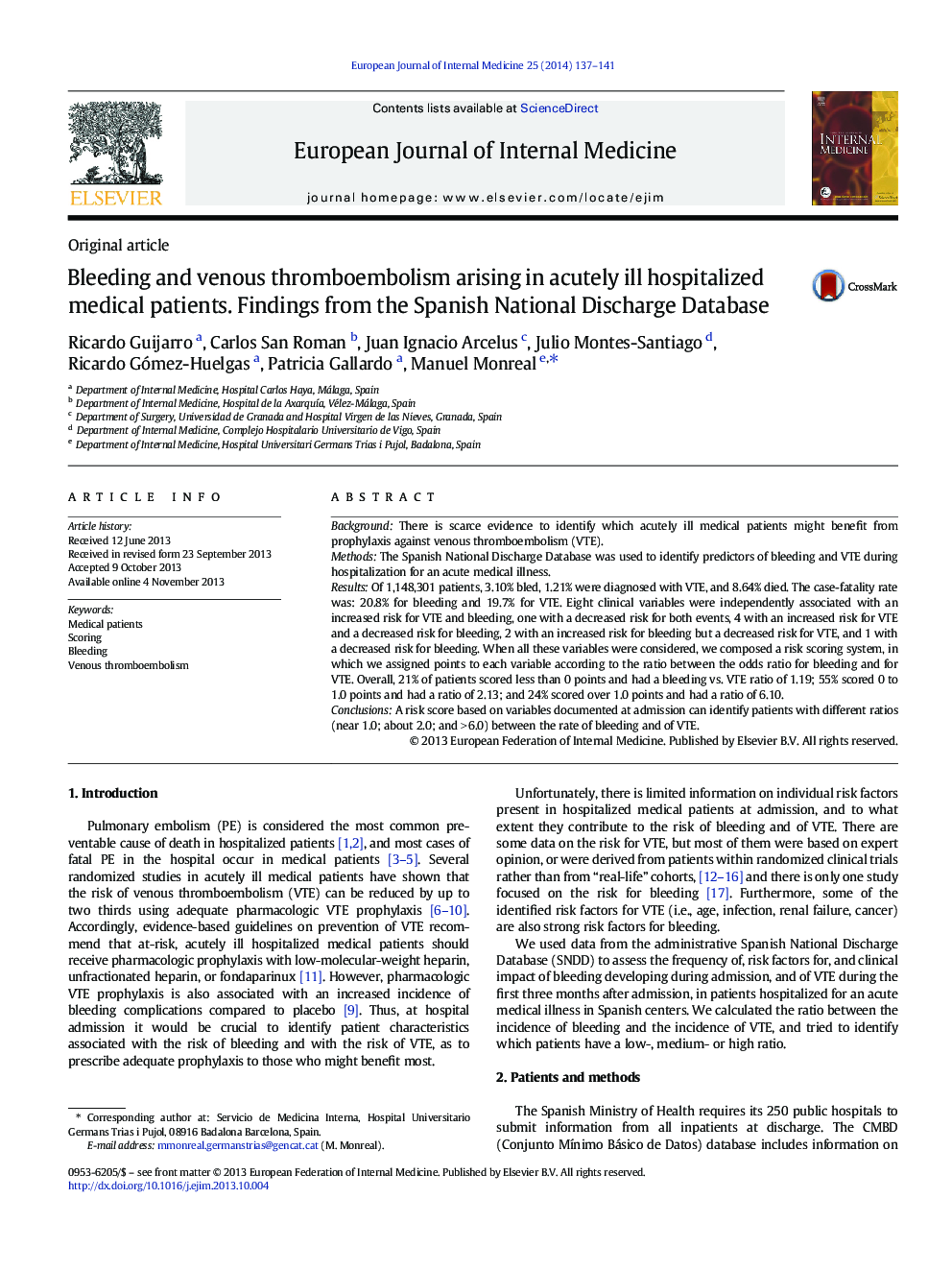| Article ID | Journal | Published Year | Pages | File Type |
|---|---|---|---|---|
| 3466812 | European Journal of Internal Medicine | 2014 | 5 Pages |
•Among acutely ill hospitalized medical patients, the incidence of bleeding is 2.6 times more frequent than the incidence of symptomatic VTE.•Most predictors for bleeding are also strong predictors for VTE. Other variables were predictors for bleeding but not for VTE, or vice versa.•A risk score based on variables documented at admission can identify patients with different ratios (near 1.0; about 2.0; and > 6.0) between the rate of bleeding and of VTE.
BackgroundThere is scarce evidence to identify which acutely ill medical patients might benefit from prophylaxis against venous thromboembolism (VTE).MethodsThe Spanish National Discharge Database was used to identify predictors of bleeding and VTE during hospitalization for an acute medical illness.ResultsOf 1,148,301 patients, 3.10% bled, 1.21% were diagnosed with VTE, and 8.64% died. The case-fatality rate was: 20.8% for bleeding and 19.7% for VTE. Eight clinical variables were independently associated with an increased risk for VTE and bleeding, one with a decreased risk for both events, 4 with an increased risk for VTE and a decreased risk for bleeding, 2 with an increased risk for bleeding but a decreased risk for VTE, and 1 with a decreased risk for bleeding. When all these variables were considered, we composed a risk scoring system, in which we assigned points to each variable according to the ratio between the odds ratio for bleeding and for VTE. Overall, 21% of patients scored less than 0 points and had a bleeding vs. VTE ratio of 1.19; 55% scored 0 to 1.0 points and had a ratio of 2.13; and 24% scored over 1.0 points and had a ratio of 6.10.ConclusionsA risk score based on variables documented at admission can identify patients with different ratios (near 1.0; about 2.0; and > 6.0) between the rate of bleeding and of VTE.
